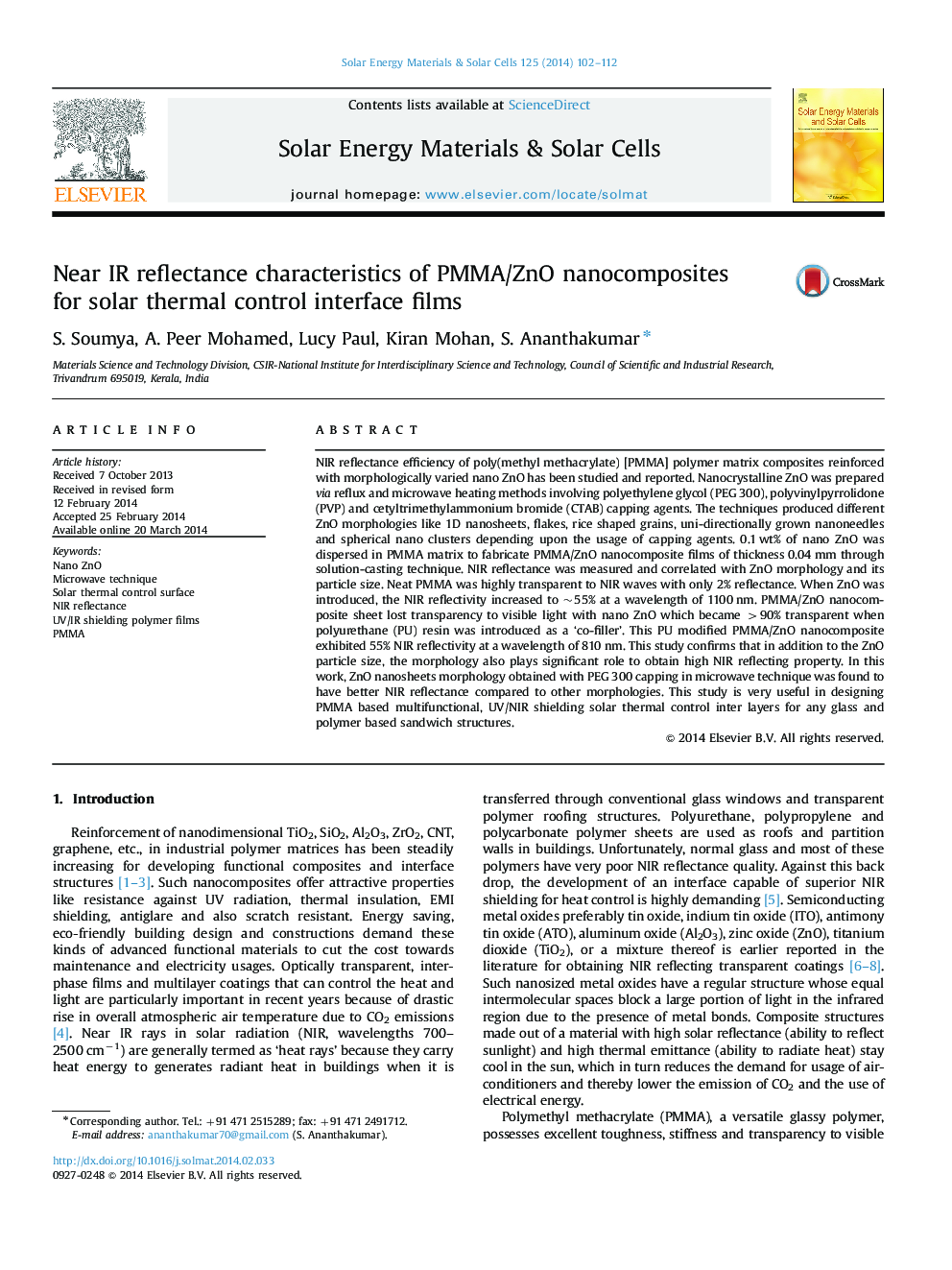| کد مقاله | کد نشریه | سال انتشار | مقاله انگلیسی | نسخه تمام متن |
|---|---|---|---|---|
| 78089 | 49316 | 2014 | 11 صفحه PDF | دانلود رایگان |

• Energy saving by ‘solar-thermal control’ interface structures is the need of future, ‘green buildings’. This concept was explored in this work.
• NIR reflecting nano ZnO was prepared and incorporated into PMMA, polyurethane polymer substrates to fabricate optically transparent nanocomposite films.
• Unlike other works, the role of ZnO morphology on NIR reflectance was systematically investigated and the results are reported.
• Nanocrystalline ZnO having sheets/platelets/flakes/whiskers/rice grains/needles and spherical morphologies was prepared via microwave and reflux techniques.
• The study confirms that in addition to the particle size, the morphology control was also extremely important to obtain high NIR reflectance.
NIR reflectance efficiency of poly(methyl methacrylate) [PMMA] polymer matrix composites reinforced with morphologically varied nano ZnO has been studied and reported. Nanocrystalline ZnO was prepared via reflux and microwave heating methods involving polyethylene glycol (PEG 300), polyvinylpyrrolidone (PVP) and cetyltrimethylammonium bromide (CTAB) capping agents. The techniques produced different ZnO morphologies like 1D nanosheets, flakes, rice shaped grains, uni-directionally grown nanoneedles and spherical nano clusters depending upon the usage of capping agents. 0.1 wt% of nano ZnO was dispersed in PMMA matrix to fabricate PMMA/ZnO nanocomposite films of thickness 0.04 mm through solution-casting technique. NIR reflectance was measured and correlated with ZnO morphology and its particle size. Neat PMMA was highly transparent to NIR waves with only 2% reflectance. When ZnO was introduced, the NIR reflectivity increased to ~55% at a wavelength of 1100 nm. PMMA/ZnO nanocomposite sheet lost transparency to visible light with nano ZnO which became >90% transparent when polyurethane (PU) resin was introduced as a ‘co-filler’. This PU modified PMMA/ZnO nanocomposite exhibited 55% NIR reflectivity at a wavelength of 810 nm. This study confirms that in addition to the ZnO particle size, the morphology also plays significant role to obtain high NIR reflecting property. In this work, ZnO nanosheets morphology obtained with PEG 300 capping in microwave technique was found to have better NIR reflectance compared to other morphologies. This study is very useful in designing PMMA based multifunctional, UV/NIR shielding solar thermal control inter layers for any glass and polymer based sandwich structures.
Graphical AbstractFigure optionsDownload as PowerPoint slide
Journal: Solar Energy Materials and Solar Cells - Volume 125, June 2014, Pages 102–112